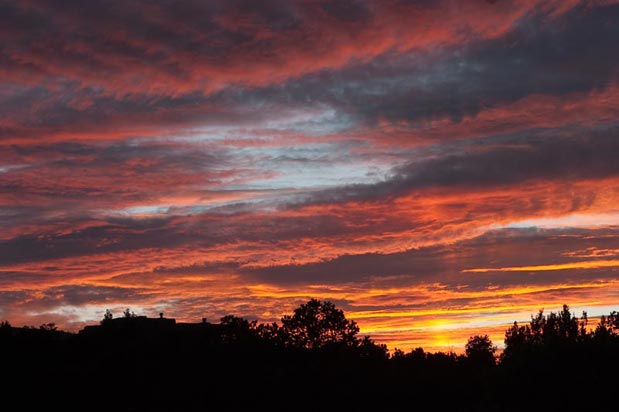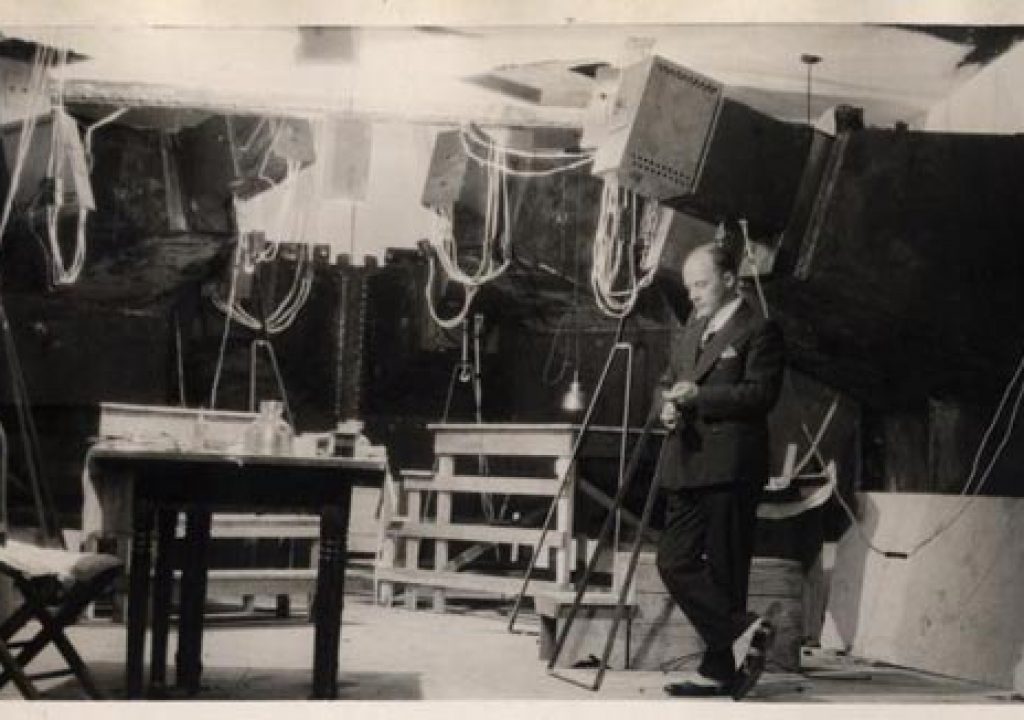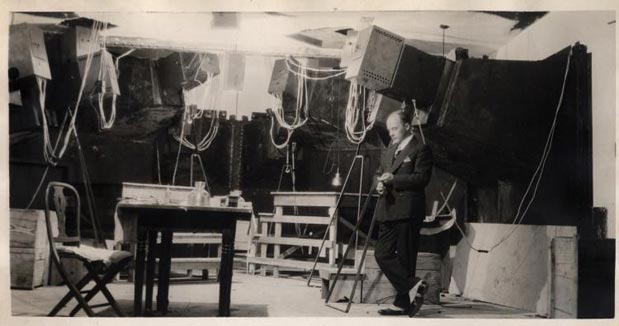This past week, I was back in Los Angeles briefly on business, and spent what little free time I had getting my art fix at LACMA. While there, I was enthralled to encounter Thomas Wilfred‘s last piece, Luccata – Opus 162. Unlike the normal still artwork you would expect to find in an art museum, Opus 162 is a “Lumia” – an animated light display created by a complex mechanism of lights, painted glass, mirrors, and the such, which plays back a long, slowly evolving composition that is back-projected into a screen. (I could imagine someone creating animations in a similar spirit today using tools such as Trapcode Form.) It was really quite beautiful, and very peaceful after a hectic day of travel and meetings.
The movie at the top of this page is the trailer for a documentary on Thomas Wilfred (available for just $9 from 13Bit Productions). The movie below is a brief excerpt from Opus 161, which some consider to be Wilfred’s finest work (turn off your computer’s audio; Willard’s pieces were meant to be performed in silence, and this movie contains just distracting crowd noise):
If you like that, a DVD of five of Wilfred’s Lumia compositions (including Opus 161) is available from Clavilux.org, an institution dedicated to the preservation of Willard’s machines and works.
Speaking of the Clavilux, in addition to these self-playing Lumia compositions, Wilfred also created “color organs” where these light shows could be interactively performed live. Very few devices remain, but for those who like to collect truly odd things, I did find online a Clavilux Junior which is for sale (that site also contains additional historic information and links).
The Yale University Archives also has online a collection of nearly 100 documents related to Wilfred, including scores, technical drawings, photographs, and the such; the image below (and the thumbnail seen elsewhere) are from that collection:
image from the Thomas Wilfred papers, 1914-1993 (inclusive), 1914-1968 (bulk). Manuscripts & Archives, Yale University
Thomas Wilfred was hardly the first, last, or only person to create visual animations as works of art; the Center for Visual Music as well as The iotaCenter both present a number of artists as well as offer videos for sale, while Umatic.nl has a nice series of pages showing performances, technical background, and historical perspective of optical synthesis.
By the way, this was my first trip back to LA since moving out of there just over a year ago – and I was shocked how much I did not miss it. (Needing a half hour to drive 4 miles from my hotel to LACMA being one reminder why.) We love it here in New Mexico – where we get to see light shows of a different kind:

The content contained in our books, videos, blogs, and articles for other sites are all copyright Crish Design, except where otherwise attributed.

Filmtools
Filmmakers go-to destination for pre-production, production & post production equipment!
Shop Now














